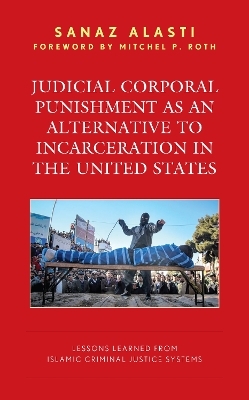
Judicial Corporal Punishment as an Alternative to Incarceration in the United States
Lessons Learned from Islamic Criminal Justice Systems
Seiten
2023
Lexington Books/Fortress Academic (Verlag)
978-1-6669-3029-0 (ISBN)
Lexington Books/Fortress Academic (Verlag)
978-1-6669-3029-0 (ISBN)
This book ignites debates about the history and persistence of judicial corporal punishment in criminal justice systems and examines if corporal punishment is a less cruel alternative to spending years behind bars in primitive and punitive jails and prisons.
Sanaz Alasti leaves the mainstream alternatives to incarceration to examine a different, seemingly archaic approach, physical (but non-carceral) punishment—corporal punishment. This book ignites debates about the history, persistence, and use of corporal punishment in criminal justice systems.
Alasti compares penological practices in in Western societies, represented by the United States, and Islamic societies, represented by Iran, to analyze which practices are more deterrent, less costly, and most humane. While Alasti does not suggest this should be the norm, she does present intriguing questions. Which is more barbaric? Is judicial corporal punishment a more humane and effective form of punishment compared to incarceration? Is corporal punishment a less cruel alternative to spending years behind bars in primitive and punitive jails and prisons? This book would be of interest to those studying criminology, criminal justice, history, law, and sociology.
Sanaz Alasti leaves the mainstream alternatives to incarceration to examine a different, seemingly archaic approach, physical (but non-carceral) punishment—corporal punishment. This book ignites debates about the history, persistence, and use of corporal punishment in criminal justice systems.
Alasti compares penological practices in in Western societies, represented by the United States, and Islamic societies, represented by Iran, to analyze which practices are more deterrent, less costly, and most humane. While Alasti does not suggest this should be the norm, she does present intriguing questions. Which is more barbaric? Is judicial corporal punishment a more humane and effective form of punishment compared to incarceration? Is corporal punishment a less cruel alternative to spending years behind bars in primitive and punitive jails and prisons? This book would be of interest to those studying criminology, criminal justice, history, law, and sociology.
Sanaz Alasti is professor of criminal justice and director of the center for death penalty studies at Lamar University.
List of Tables and Figures
Foreword
Introduction
Chapter 1: Definition & History of Corporal Punishment
Chapter 2: Incarceration v. Corporal Punishment
Chapter 3: Penological Objectives and Advantages of Corporal Punishment
Chapter 4: From Different Method to International Restrictions
Chapter 5: Contemporary Use of Corporal Punishments
Chapter 6: Corporal Punishment & Human Rights
Conclusion
Appendix: Table of Cases
Glossary
Bibliography
About the Author
| Erscheinungsdatum | 20.07.2023 |
|---|---|
| Vorwort | Mitchel P. Roth |
| Sprache | englisch |
| Maße | 159 x 237 mm |
| Gewicht | 435 g |
| Themenwelt | Recht / Steuern ► EU / Internationales Recht |
| Recht / Steuern ► Strafrecht ► Kriminologie | |
| Recht / Steuern ► Strafrecht ► Strafverfahrensrecht | |
| ISBN-10 | 1-6669-3029-6 / 1666930296 |
| ISBN-13 | 978-1-6669-3029-0 / 9781666930290 |
| Zustand | Neuware |
| Haben Sie eine Frage zum Produkt? |
Mehr entdecken
aus dem Bereich
aus dem Bereich
klare Antworten aus erster Hand
Buch | Softcover (2023)
UTB (Verlag)
19,90 €


